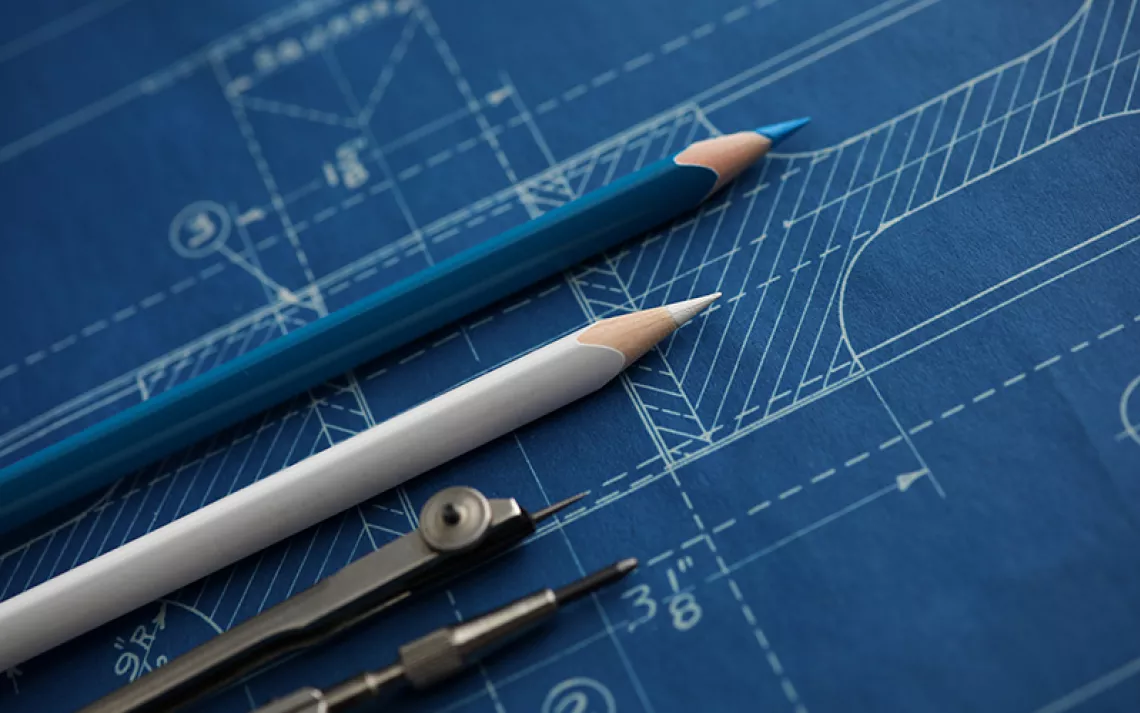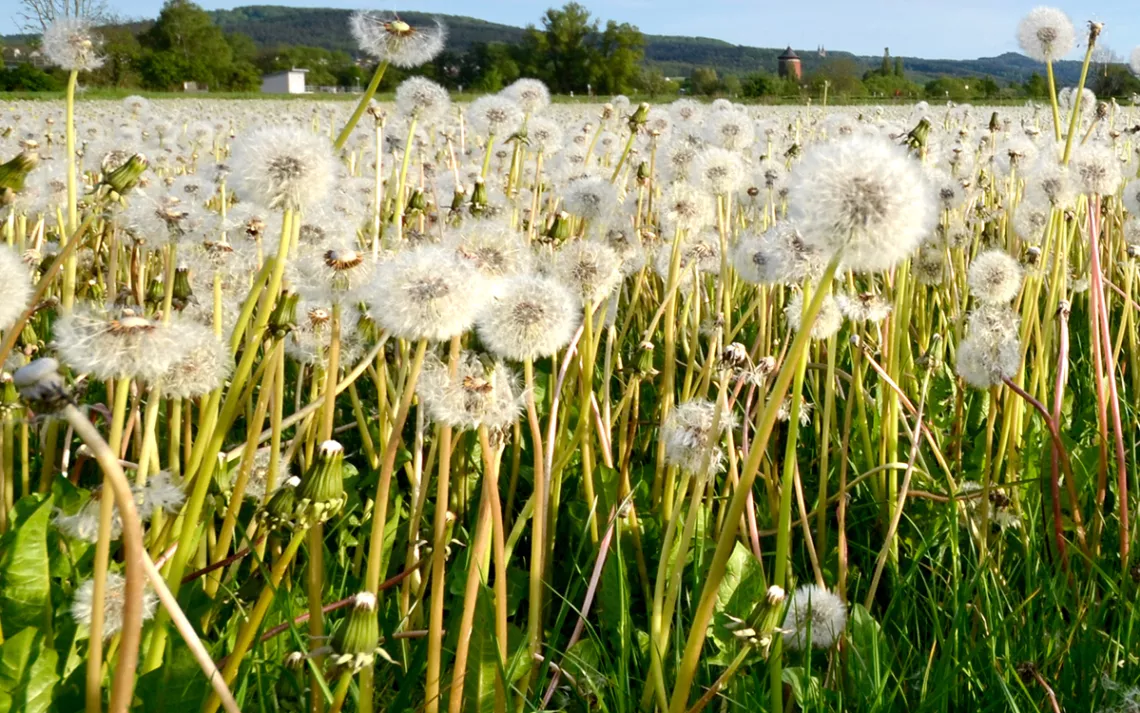How Green is Your Alley?
Citizen-driven urbanism projects turn gray zones into community space
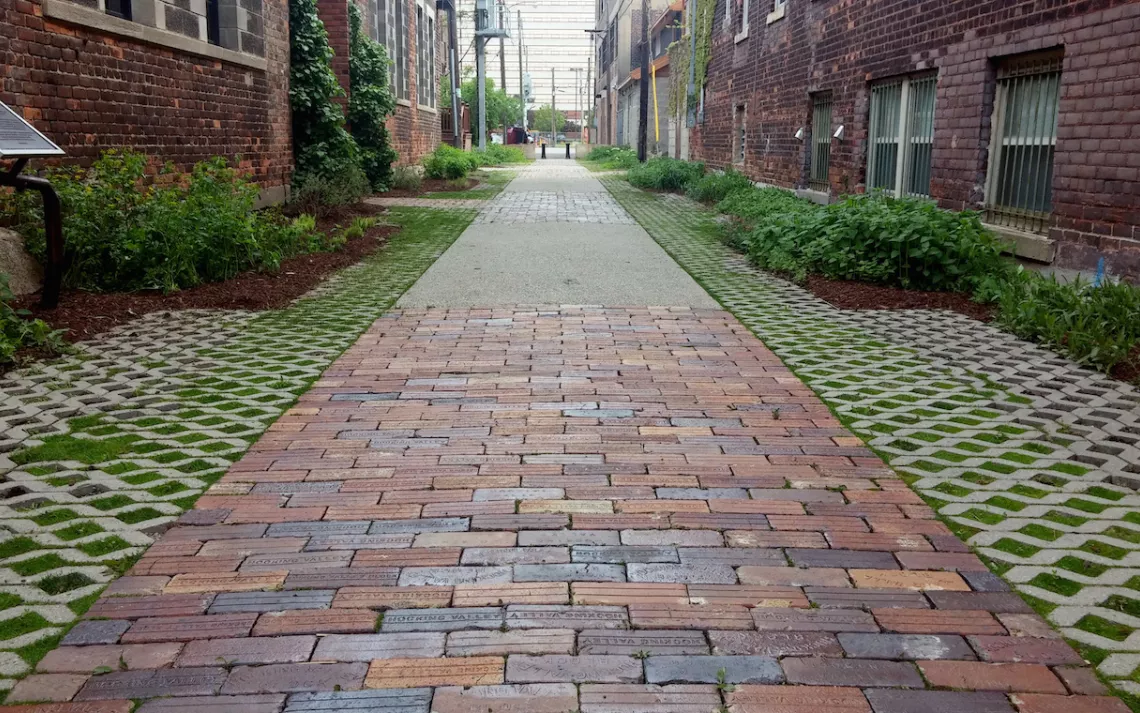
Detroit's first green alley. | Photos courtesy of Green Garage Detroit
Like many alleys in Detroit, one back route in Midtown was long studded with broken glass. For years, it was a stretch of pavement, dumpsters, and dreams that had long since broken down—collecting trash, flooding often, and hosting mattresses of, let’s just say, ill repute.
In 2008, Tom and Peggy Brennan were beginning to remodel an old Model T showroom bordering that alley into their eco-business incubator, Green Garage Detroit. But the couple knew that having an environmental wreck for a side space would visibly undercut their sustainability objectives. The city of Detroit, emerging from bankruptcy, didn’t have spare funding to fix it. So, the Brennans got together with neighboring business owners, including John Linardos and Dan Scarsella of Motor City Brewing Works, to rethink the stretch.
Enlisting volunteer help, they repaved the alley with a filtering substrate of rocks and soil, topped by concrete lattice pavers and the reclaimed bricks—materials they’d scoured Craigslist for. They added LED lighting, and along the alley’s edges planted a native garden of easy-to-manage Michigan plants like goldenrod, milkweed, turtlehead, and coneflower. Grants from the Kresge, Americana, and DTE Energy foundations helped enable the $100,000-plus project.
Linardos remembers the endeavor as “a lot of headaches,” but says it was more than worthwhile. “One of our hopes was that it would motivate people to get together and redo a lot of the alleys, because alleys are a huge part of Detroit. They could be developed, or continue to be a liability,” he says. “It put them on people’s radar.”
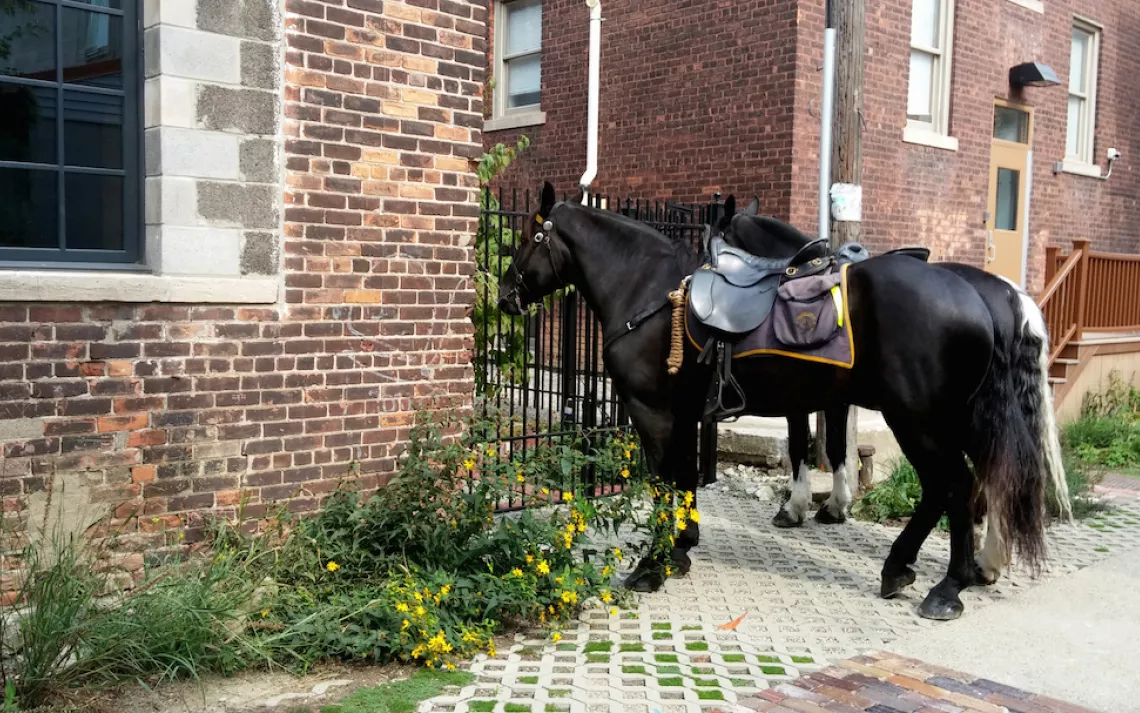
The alley reopened in 2010. In 2014, Detroit’s second-heaviest single-day rainfall ever caused flooding so major that people abandoned cars on the highway. The green alley didn’t hold a single puddle. Ever since, it’s been inspiring urban environmentalists.
Influencing a Movement
That first Detroit Green Alley has become a model for “living alleyways”—which offer both sustainability and community-building attractiveness—locally and beyond. Following in the leafy footsteps of community gardens and pocket parks, many urban planners see these revived, greenified alleyways as the next great possibility in citizen-driven sustainable urbanism.
These days, a clutch of evergreens offers visitors to the Detroit project year-round nature. Vines climb up the back of Motor City Brewing Works, and a neon sign invites walkers to use its rear, alley entrance. Although permanent seating isn’t allowed, special events held there have included alleyway dinners, outdoor movies, marching-band performances, and photo shoots commissioned by everyone from well-known musicians to wedding parties. Those offices and apartments overlooking the alley are in higher demand than those overlooking the street.
“It’s now part of the fabric of the neighborhood,” Tom Brennan says. “They’re talking about a whole alley district eventually. These have become like little pocket parks.”
The “they” Brennan refers to is the area’s nonprofit development corporation, Midtown Detroit Inc., which recently finished its sixth living alleyway project. Once it reaches 10 or 12, executive director Susan Mosey says they’ll look at designating Midtown as an alley district. Zipping a visitor around to the various projects, Mosey arrives at Selden Alley, which runs alongside the James Beard Award-nominated restaurant Selden Standard. She says its chefs harvest herbs like lavender, rosemary, oregano, and sage from the 26 varieties of plants growing in Selden Alley’s garden.
“All these alleys were completely collapsing. Before, it was really scary,” she says, as a runner jogs through extra-wide Willis Alley, a longtime problem area that is now lined with big plantings. “Now, everyone in the whole neighborhood wants us to do a green alley behind them.”
Other American cities, like Chicago, Nashville, San Francisco, and Seattle, have been rethinking their alleyways, too. Chicago was an early leader in making its alleys more sustainable, piloting a city project in 2006 to repave more than 100 of its flood-prone alleys with porous material. In fact the Green Garage-Motor City Brewing team used Chicago’s project handbook as a guide two years later, when they launched their own project.
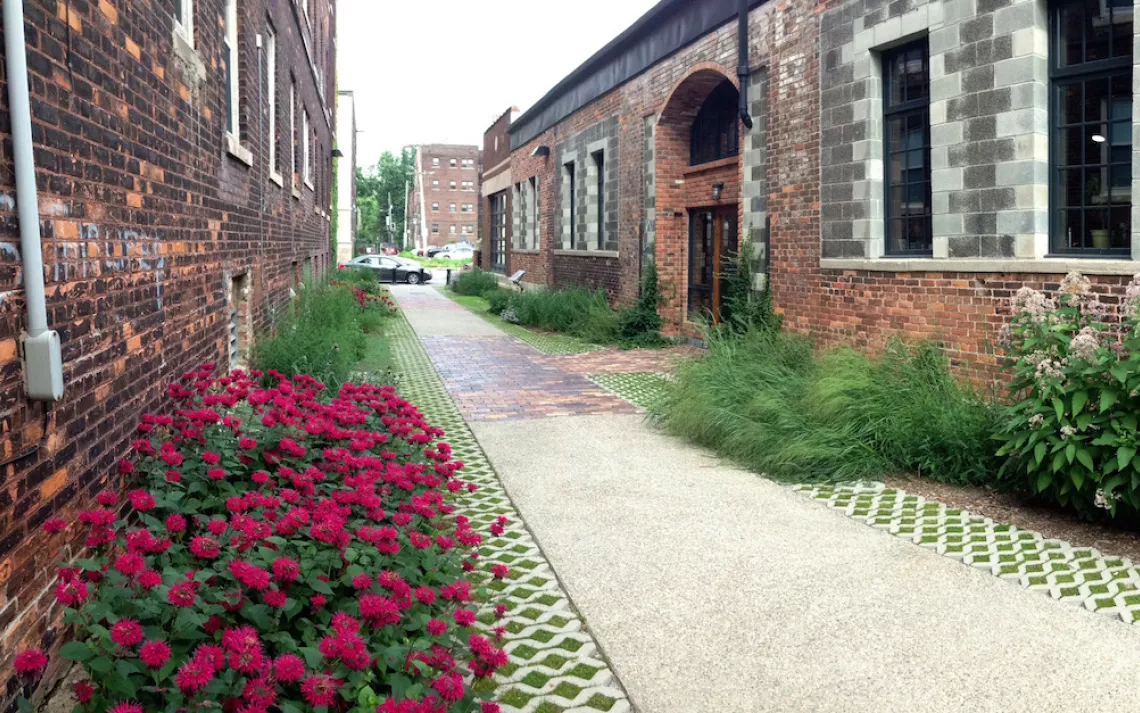
More recently, Nashville has installed rain gardens in the Nations neighborhood, and San Francisco’s planning department has published a Living Alleys Toolkit, a how-to guide for neighbors who’d like to transform their back routes (it depicts Midtown Detroit’s lattice paving as a model). Seattle started a Clear Alleys Program, which designates certain spaces, like Nord Alley, as “festival streets” for community events.
“Alleys can be seen as positive public open space, which nobody thought about for a long time—they were seen more like a garbage dump area,” says Daniel Toole, an architect, alley designer, and author of the book Tight Urbanism. “Now, because of experiments like the one in Detroit, the more people see them as a place where people want to be—and the more you’re going to see green technology upgrade them.”
Toole, who got his start in living alleyways with a blog dedicated to Seattle alleys, is a recent Harvard Graduate School of Design alum. When he won a graduate fellowship to study some of the world’s most interesting alley initiatives in 2010, Detroit was the third stop on his travel itinerary—after San Francisco and Chicago, and before Japan and Australia.
Toole says Detroit’s citizen-driven approach most struck him. “It was amazing to see this place become an island in a place not known for walkable urbanism,” Toole says. “Now it’s being used almost like a park.”
Many others have studied the project, and in many cases ventured to see it from as far away as the Netherlands, Germany, and Lebanon. Tom Brennan estimates he and his associates have given several thousand alley tours. Even more surreal? The multiple times he’s walked down the alley and overheard strangers explaining the project to others. Toole, for his part, often points blog visitors seeking advice on greening their own alleys to the Detroit model.
An Exponential Impact
As the influence of the original Detroit Green Alley spreads through its neighborhood and beyond, the community bona fides and eco-effects continue to multiply.
Last year, the Brennans opened a revamped an old apartment building they’d transformed into an eco-lodge called El Moore. With $100,000 in funding help from Midtown Detroit Inc., they added another green alley behind it. El Moore’s alley looks a little different than the pedestrian-only Detroit Green Alley, as it’s required to allow for cars and trucks. The 20-foot-wide stretch includes 14 feet of concrete at the center, with three feet of absorbent lattice paving on each side.
Still, the project it is designed to be walker-friendly. A brick path cuts between the North Cass Community Garden and, across the alley, the team is cultivating a new pocket park on the lodge’s corner property. “No one walked down this alley before. Now you see people walking, and riding their bikes through it,” says El Moore manager Jason Peet. “From a community standpoint, it’s a connector.”
The longer-term goal is to encourage more of this variety of active, sustainable use. The Brennans lived for several years in Tokyo, where the density was so high, and alleys used so intensely, that it was hard to tell where the streets ended and the alleys began. Needless to say, they were inspired. As Midtown fills in, they hope the collision of nature, community, and commerce found in living alleyways helps nudge people to take public transit in from outlying areas, and take a stroll around.
In the meantime, the biggest environmental beneficiary of these projects has been the water system. The Midtown alleys feature high points down the center, so water flows out to the absorbent planting systems at the edges. Thanks to this natural filtration, the alleys keep floodwaters from overloading Detroit’s storm system. Otherwise, rainwater could mix with sewage that might run out to the the city’s waterways—the Detroit River, Lake St. Clair, and Lake Erie.
After the city emerged from bankruptcy last year, bills from the Detroit Water and Sewerage Department began including both fees for drainage, and discounts for mitigation. Linardos recalls the thrill of seeing a picture of the Detroit Green Alley illustrate city mitigation reductions. “It was pretty cool to see it influence architectural and design decisions so quickly,” he says. “We were ahead of our time.”
Another bonus: these green zones also act as a climate buffer in the face of global warming and urban heat islands. In plain English, it’s cooler in the living alleyways. After experiencing that effect, the Motor City Brewing Works owners—who throw their doors and windows open in summer—installed the alley’s same kind of Turfstone lattice pavers and reclaimed bricks out front.
The Midtown alleys also function as habitats for wildlife, like the black squirrels that scamper through during chilly early spring. As the weather warms up, bees and other pollinators will arrive to conduct business, Peggy Brennan says. Even monarchs will glide in, drawn by the milkweed. “There are all kinds of birds, butterflies, insects, ladybugs,” she says. “All the things that define a healthy ecosystem, we’ve been able to see in the alley.”
Tom Brennan could be referring to the Detroit Green Alley’s growing plant life, or its spreading influence, when he says: “You don’t know where that seed is going to blow.”
 The Magazine of The Sierra Club
The Magazine of The Sierra Club


